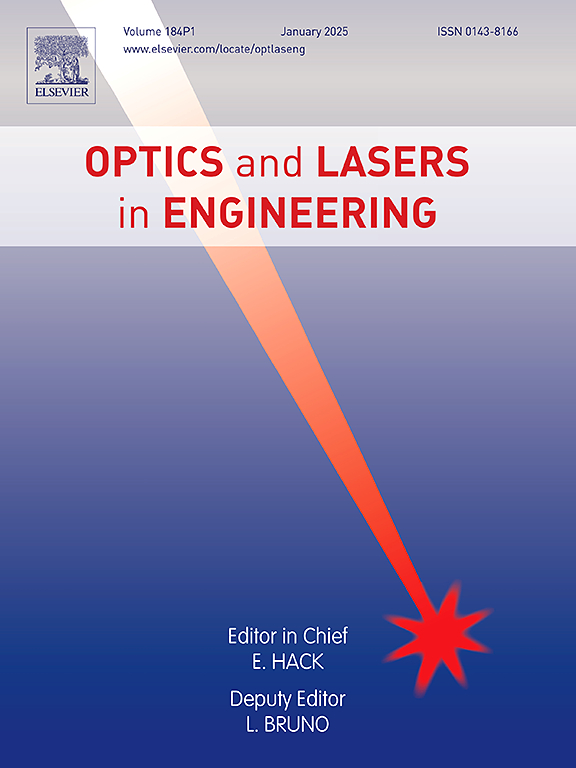Low-rank adaptive transfer learning based for multi-label defect detection in laser powder bed fusion
IF 3.5
2区 工程技术
Q2 OPTICS
引用次数: 0
Abstract
Defects in the laser powder bed fusion (L-PBF) process have significantly hindered the broader application of this technology, and consistent quality assurance remains a critical challenge. To address this, real-time monitoring technologies are urgently required to effectively guide the production of high-quality parts. Although deep learning has advanced the intelligent development of powder bed defect detection methods, challenges persist in terms of model generalizability and robustness in complex environments. Additionally, the accurate labeling and recognition of tiny or overlapping defects remain difficult tasks. In this study, we propose a novel method for in-situ monitoring of L-PBF powder bed defects, integrating low-rank adaptive transfer learning with multi-label classification. This method offers a robust solution for in-situ monitoring under complex and variable conditions, achieving high recognition accuracy for composite powder bed defects while maintaining a low training cost. Our approach attains a testing exact match ratio of 93.28 % with significantly fewer training parameters (1.6956M), surpassing full fine-tuning methods. Furthermore, the proposed method demonstrates enhanced robustness in scenarios with limited training samples and complex conditions. When transferred to a selective laser sintering defect dataset, the method achieves a 99.32 % testing exact match ratio within just 10 epochs, illustrating its effectiveness in cross-task and cross-process transfer learning. The proposed method holds promise for efficient powder bed defect identification across different additive manufacturing processes.
基于低等级自适应迁移学习的激光粉末床融合中的多标签缺陷检测
激光粉末床熔融(L-PBF)工艺中的缺陷极大地阻碍了这一技术的广泛应用,而始终如一的质量保证仍然是一项严峻的挑战。为此,迫切需要实时监控技术来有效指导高质量零件的生产。虽然深度学习推动了粉末床缺陷检测方法的智能化发展,但在复杂环境下的模型泛化和鲁棒性方面仍存在挑战。此外,准确标记和识别微小或重叠缺陷仍然是一项艰巨的任务。在本研究中,我们提出了一种用于原位监测 L-PBF 粉末床缺陷的新方法,将低秩自适应迁移学习与多标签分类相结合。该方法为复杂多变条件下的原位监测提供了一种稳健的解决方案,在保持较低训练成本的同时,实现了对复合粉末床缺陷的高识别精度。我们的方法以显著较少的训练参数(1.6956M)实现了 93.28 % 的测试精确匹配率,超过了完全微调方法。此外,在训练样本有限和条件复杂的情况下,所提出的方法也表现出更强的鲁棒性。当转移到选择性激光烧结缺陷数据集时,该方法在短短 10 个历时内就达到了 99.32 % 的测试精确匹配率,这说明了它在跨任务和跨过程转移学习中的有效性。所提出的方法有望在不同的增材制造工艺中实现高效的粉末床缺陷识别。
本文章由计算机程序翻译,如有差异,请以英文原文为准。
求助全文
约1分钟内获得全文
求助全文
来源期刊

Optics and Lasers in Engineering
工程技术-光学
CiteScore
8.90
自引率
8.70%
发文量
384
审稿时长
42 days
期刊介绍:
Optics and Lasers in Engineering aims at providing an international forum for the interchange of information on the development of optical techniques and laser technology in engineering. Emphasis is placed on contributions targeted at the practical use of methods and devices, the development and enhancement of solutions and new theoretical concepts for experimental methods.
Optics and Lasers in Engineering reflects the main areas in which optical methods are being used and developed for an engineering environment. Manuscripts should offer clear evidence of novelty and significance. Papers focusing on parameter optimization or computational issues are not suitable. Similarly, papers focussed on an application rather than the optical method fall outside the journal''s scope. The scope of the journal is defined to include the following:
-Optical Metrology-
Optical Methods for 3D visualization and virtual engineering-
Optical Techniques for Microsystems-
Imaging, Microscopy and Adaptive Optics-
Computational Imaging-
Laser methods in manufacturing-
Integrated optical and photonic sensors-
Optics and Photonics in Life Science-
Hyperspectral and spectroscopic methods-
Infrared and Terahertz techniques
 求助内容:
求助内容: 应助结果提醒方式:
应助结果提醒方式:


